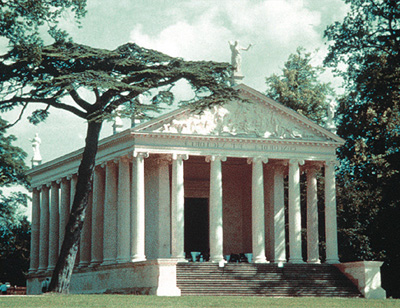|
|

08.
Architect: Peter Inskip & Peter Jenkins Architects
The Temple is one of the most important and probably the first
neo-classical buildings in Europe, dating from in 1747. Over the next 250 years the temple was altered and many times with 16 of its ionic columns removed for the construction of a chapel. A conservation plan was crucial. Linked with an enabling works contract, the risk of
surprises inevitable with historic buildings was reduced and the work came in under budget. The statue of Victory was restored and the
tympanum sculpture conserved. The renders on the pediments and entablature were conserved with missing sections replaced. The
missing ionic columns were surveyed so their replacements matched exactly. These were turned by computer controlled lathes then hand finished once erected. The plinth was repaired and strengthened
with a grid of stainless steel rods in epoxy resin. Archeological
investigations revealed the ghostings of inscriptions removed from
the medallions in the 19th century, which led to their reinstatement. Similar studies allowed for the reconstruction of the Aedicule, removed in 1845. Paint analysis was used to identify the 18th century finishes and as a result the doors were painted Prussian blue, the gilding
was correctly disposed and the renders, plasters and stone were
limewashed, giving a unity and lightness to the building that had
been completely lost. Finally much work has been done on the
planting, to begin to restore it to its original, magnificent setting.
'It was good to see knowledgeable and professional expertise applied
to this successful restoration. It enhances greatly its surroundings
and will delight visitors.' Jury
'The victory that the temple now commemorates is that of historical
authenticity over subjective enhancement.' Architect
'Its conservation is a reinstatement that, in some fields, Britain can
lead the way for technique and expertise. We are delighted and proud
of the result.' Client
|